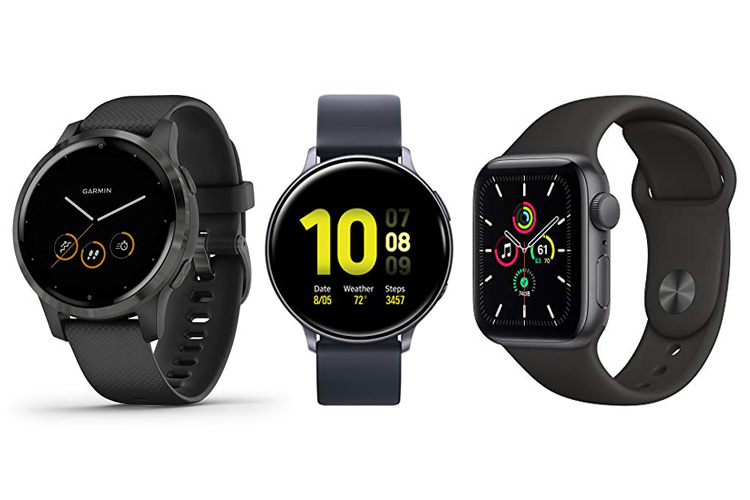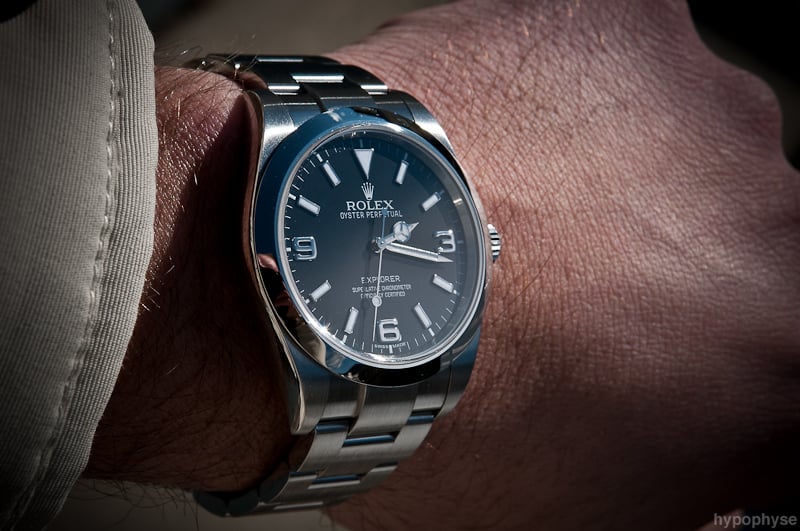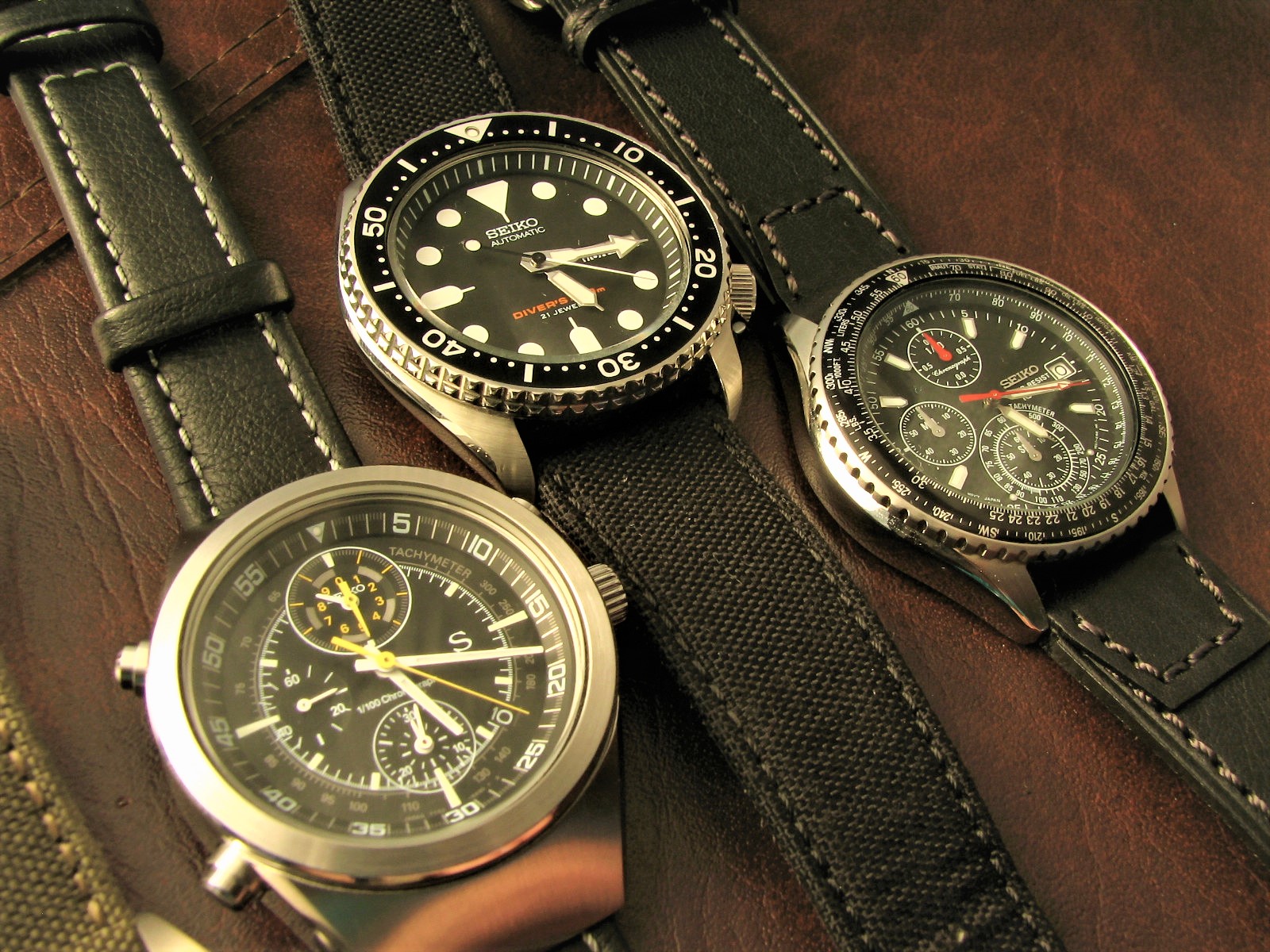It seems that new smartwatches are announced every week with new specs and features, this makes it hard to know what to look for, let alone how much you should be paying.
As a savvy buyer myself, I’m always on the lookout for watches that offer high-end specs at an affordable price. I’ve put together this guide to the best smartwatches under $300 to share some great value devices I’ve spotted.
My top pick is the Samsung Galaxy Active 2 which features Samsung’s lightweight Tizen platform and a touch-sensitive bezel for a smooth experience. There’s also a broad range of fitness sensors and onboard music storage which will appeal to those looking to use the watch when working out.
Keep reading for my full recommendations, including picks for iPhone users, some stylish designs, and one with incredible 2-week battery life.
(Please note, at the time of publishing, all these smartwatches were selling for $300 or less. Prices may have fluctuated since then, possibly pushing them over the original budget).
Table of Contents
Best Smartwatches Under $300
Best Overall: Samsung Galaxy Watch Active 2

The Galaxy Watch Active 2 is a slimmed-down version of their flagship Galaxy Watch 3 which is aimed at fitness enthusiasts. It runs on Tizen which is an open-source platform developed by Samsung, although can still be used with all Android and iPhones.
The watch is fast thanks to the Cortex-A53 processor and has a bright always-on display. Instead of a physical rotating bezel, Samsung has created a touch-sensitive bezel that performs the same function without being too bulky on your wrist during exercise. This does make it slightly more prone to scratches.
The watch has 4GB of internal storage which can be used for Podcasts or Spotify. By connecting your Bluetooth headphones directly to the watch, you can use it tether-free.
Building on its appeal to the fitness community, there is GPS, a heart rate monitor, an accelerometer, and blood pressure monitoring. It also has an IP68 rating which means it’s dustproof and waterproof up to 1.5m so is suitable for swimming and water sports.
There aren’t as many third-party apps compared to Apple’s watchOS or WearOS, however, the watch comes with Samsung’s own ecosystem of apps such as Samsung Health, Samsung Pay, and Bixby.
Runner Up: Garmin Vivoactive 4

Garmin’s flagship smartwatch, the Vivoactive 4, is available for under our set budget yet still manages to pack in a lot of features for the price.
Given Garmin’s history in sports smartwatches and fitness trackers, you won’t be surprised to find that the operating system, Garmin OS, is very sports-focused. It comes with a range of pre-installed fitness apps and has a healthy ecosystem of third-party apps such as Strava and Spotify.
In terms of sensors, it has GPS, a heart rate monitor, and a pulse oximeter for measuring oxygen saturation.
This was also our top smartwatch pick for music lovers with onboard storage for up to 500 songs and music streaming apps that allow offline listening, including Spotify, Deezer, and Amazon Music.
If you’re looking for a watch to use during outdoor exercise, the transflective display of the Vivoactive 4 makes it an ideal candidate. This makes it easier to see in direct sunlight and is also better for energy consumption compared to AMOLED equivalents.
Speaking of battery performance, the Vivoactive 4 has a decent battery life of around 2-3 days with regular use or up to 8 days in smartwatch mode. If you’ll be using it for endurance sport, the battery can last 6 hours with continuous GPS.
The downside is the design which looks cheaper than many rivals shared here, mainly due to the plastic build. However, this does mean that it’s lighter on your wrist which is ideal during workouts.
Budget Pick: Garmin Instinct
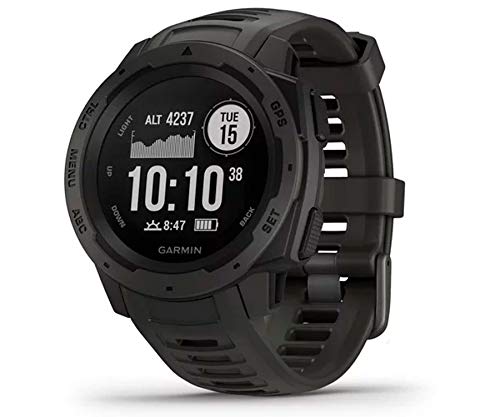
Now another top smartwatch from Garmin, this time the Garmin Instinct which is an altogether different type of device. It doesn’t have third-party app support, NFC technology, or a touch screen as found on the Vivoactive range.
Instead, the Instinct is highly targeted at mountain climbers and outdoor enthusiasts with extreme ruggedness and a ton of features for use on the trail and to record your activity. It features a magnetic compass, route mapping, elevation profiles, storm alerts, and more.
After your excursions, you can review your route thanks to the GPS and heart rate monitor that are built-in. The watch is useful for general activity monitoring such as counting your daily steps or tracking your sleeping patterns.
Although the watch has more limited smart functions, you can still take a look at notifications, see your incoming calls, and control media on your phone. Keep in mind that there is no internal storage or cellular connectivity so the watch needs to be paired to a phone to make use of most features.
Best for iPhone Users: Apple Watch SE

The Apple Watch SE is Apple’s budget-friendly smartwatch that was launched alongside their top-tier Series 6 watch with the same premium design, although a slightly reduced feature set. It’s available as both a GPS-only and an LTE version for use without your phone.
The watch features the digital crown for easy scrolling and Apple’s haptic feedback technology that helps with the navigation of the interface.
It has a vibrant OLED screen, although doesn’t have an always-on display like the Series 6. There’s 32GB of onboard music storage that can be used for downloading from Apple Music or YouTube Music.
For fitness, it has GPS and a heart rate monitor, both of which are highly accurate and share the data with Apple Health. However, it doesn’t have some of the more advanced sensors found in the Series 6 such as blood oxygen sensor or ECG
The watch will integrate very well with your iPhone, with the ability to make/receive calls, access Siri, and send messages via iMessage. If you don’t have an iPhone then you’re out of luck as the Apple Watch can only be used with iPhones.
Unfortunately, the watch falls down when it comes to battery life lasting 18 hours on a single charge, just like your iPhone this will need charging every night.
Alternative for iPhone Users: Apple Watch Series 4

The Series 4 is an older Apple Watch launched in 2018 that has similar specs and a similar sub-$300 price point as the newer Apple Watch SE.
Unlike the SE, the Series 4 has an electrocardiogram sensor that monitors your blood flow as a way of keeping an eye on your heart health.
This may be important to older users or those at risk of medical conditions such as atrial fibrillation (Afib).
On the downside, the Series 4 does not have an always-on display and has 16GB of onboard music storage, compared to 32GB in the SE and other newer Apple Watches.
Aside from these few things, all of the other features you’d expect from Apple are included such as Apple Pay, Apple Music, and integration with Apple Health.
The Series 4 is available in both stainless steel and aluminum, with several color options in both designs. There’s a GPS-only or an LTE version that will allow you to make calls and send messages whilst away from your phone.
Best for Tether-Free Experience: TicWatch Pro 4G/LTE
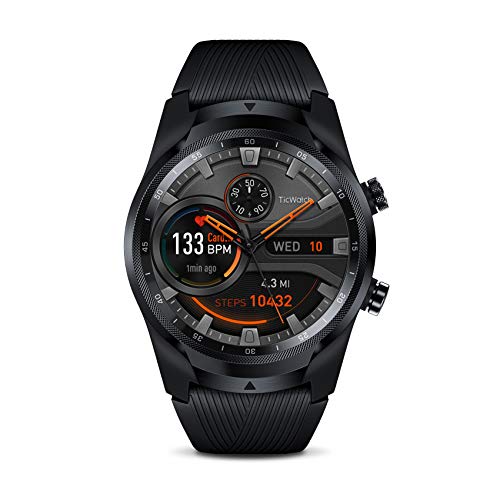
The watch runs WearOS which is an all-encompassing operating system from Google that pairs with both iPhone’s and Android. As well as a ton of third-party apps, this gives you access to Google’s own apps such as Maps, Google Pay, and Google Assistant.
It features TicWatch’s signature dual screen which uses an LCD screen for the always-on display, much like a traditional digital watch, but also has an AMOLED screen underneath for displaying apps and other smart features.
This screen has a huge impact on the battery life, allowing it to last 2-3 days on a single charge putting it well ahead of other top WearOS smartwatches. There’s also the option of 30-day battery life if you stick to the LCD screen only in essential mode.
The watch has a cellular connection and comes with both a microphone and speaker built-in so you can call or message without your phone. This is useful if you head out for some exercise and need to take a key call or quickly respond to a WhatsApp notification.
Adding to its appeal is 4GB of onboard storage that can be used to download music for listening on the go, a heart rate sensor, GPS, and an IP68 rating so you don’t need to worry about getting it wet.
The watch is priced under $300, but keep in mind that you’ll need a relevant Verizon plan to make use of its LTE functions.
Most Stylish: Fossil Gen 5 Carlyle

The Gen 5 Carlyle is another WearOS watch from Fossil. Being a traditional watchmaker before the invention of smartwatches, they have focused on design with more of a minimal and stylish look than the TicWatch mentioned earlier that’s been inspired by their traditional watches.
The Carlyle model (shown here) is available with a black or smokey case and a variety of straps including leather and stainless steel. For women, the Julianna model has more feminine colorways such as soft rose gold and pink.
Inside the Gen 5 has a speedy Snapdragon 3100 processor with 1GB of RAM that allows WearOS to run smoothly. It has three programable buttons on the side, including a crown dial for scrolling.
Being a WearOS watch, you can access lots of third-party apps from the Play Store, including Spotify which can be used for downloading music to the watch’s 8GB of onboard storage. The watch also has Google Pay which can be used for making contactless payments via the NFC chip.
Unfortunately, the Gen 5 doesn’t fare well on battery life, only just making it through a full day on a single charge.
Best for Wellness: Fitbit Sense

If you’re after a smartwatch that’s packed full of sensors to monitor and improve your wellbeing, the Fitbit Sense is a great option. The watch runs on Fitbit OS which features both Google Assistant and Alexa support.
You can make and receive calls on the watch via the built-in microphone and speaker, plus you can easily respond to messages via speech-to-text.
It has the typical sensors you’d expect from a smartwatch such as GPS and heart rate monitoring, but it also includes an ECG sensor for detecting unusual heart rhythms, stress monitoring that gives you a daily score based on electrodermal activity (conductivity of your skin), and advanced sleep monitoring that uses factors such as your skin temperature and blood oxygen saturation.
As well as tracking your health vitals, the app also comes with some helpful tools for managing and improving your stress and sleep scores. For example, you can set mindfulness goals and make use of meditation tutorials.
The downside to the Fitbit Sense is that some of these features and advanced reporting require a Fitbit Premium subscription.
Great Value: Huawei GT Watch GT 2

Huawei is one of the leading smartwatch brands offering top-tier specs at a more affordable price tag than rivals. Their latest flagship smartwatch, the Huawei Watch GT2 is a testament to this.
The watch uses their Kirin A1 chipset and their own operating system, Huawei Lite OS, both of which contribute to the watch’s outstanding battery life of up to 14 days.
The operating system doesn’t provide as many features as WearOS or watchOS from Google and Apple. For example, you can’t make or receive calls and there’s no built-in WiFi so you must always be tethered to a phone, however, you can still mirror notifications from your phone and control media.
Although there are no third-party apps, the GT2 pairs with the Huawei Health app which provides a full dashboard for health tracking via the watch’s built-in sensors. This includes tracking your workouts via GPS or data from the heart rate monitor.
Unfortunately, the watch is not great for listening to music, it has some onboard storage but without Spotify or any other streaming apps, this is fairly useless. It also lacks NFC outside of China so you can’t make contactless payments.
Best for Battery Life: Amazfit Stratos 3

If you’re after a smartwatch that doesn’t require charging every night, then new competitor Humai has several options to choose between in their Amazfit range.
In the sub-$300 category, the Stratos 3 is a great pick. It runs its proprietary operating system which has far less bloat and lower power consumption than competitors. This allows it to achieve up to 14 days battery life with just a 300mAh battery capacity.
On the downside, the watch is far less capable than rivals with no third-party apps, voice assistants, or ability to respond to your messages. This is ideal if you’re just looking for a device to tell the time and monitor your fitness, however, if you want a watch that’s more fully-featured then you might be disappointed.
The watch is capable of tracking up to 80 different sports and has a built-in GPS and heart rate monitor. If you’ll be using the watch outdoors, the transflective display will help you see the screen in sunlight. However,
It has 2GB of storage for music, however, the lack of third-party apps means this can only be used with MP3s so you’ll need to have a good collection to make use of it.
Despite being very lightweight at just 40g due to its plastic body, the watch is thicker than rivals at 13.4mm and feels uncomfortable on your wrist according to some users on Amazon.
Best for Sports Tracking: Polar Ignite

The Polar Ignite is a sports-focused smartwatch that doesn’t try to be anything more than this. It can be used for tracking over 100 different sports, although you can only store 20 on the watch at any one time.
It integrates with their Polar Flow online dashboard which combines all of your activity and sleep tracking to help you plan fitness goals. If you have a personal trainer, the dashboard can be shared with them via the Polar Flow for Coach feature.
It does have a built-in heart rate monitor or can be paired with an external device for improved accuracy. You can access adaptive training plans that are personalized based on your performance.
As well as monitoring your workouts themselves, it also measures recovery periods after exercise and provides recommendations for further training based upon this. Sleep tracking provides accurate sleep times and a detailed breakdown of your sleep cycles.
Unfortunately, the screen has the ‘flat tire’ display that was common in earlier round smartwatches but has been phased out by most other manufacturers.
Best for Athletes: SUUNTO 5

Suunto is a smartwatch brand that’s best known for its dive watches and precision instruments, so you can expect some highly accurate tracking that’s aimed at professional sportspeople and endurance athletes.
The Suunto 5 is one of their mid-tier devices that’s priced under $300. It has a very accurate GPS chip and heart rate monitor that’s comparable with a dedicated chest strap.
However, it doesn’t include a barometer, altimeter, or a compass like some of Suunto’s top-tier devices which means you won’t have accurate elevation data.
The watch has a dull screen which doesn’t help when using it outside, however, some users on Amazon report that this has a benefit on battery life, lasting anywhere between 3-8 days on a single charge.
One key omission from this watch that stands out is the lack of a touchscreen which means you’ll need to use the buttons instead, not exactly the smoothest experience.

